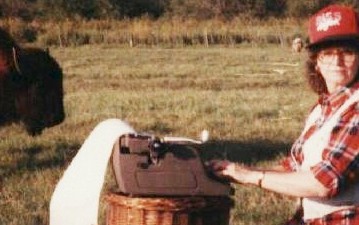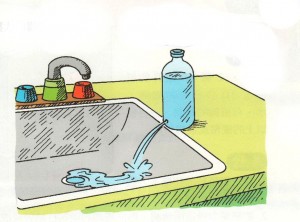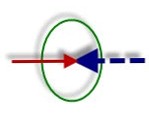FYI: I am still finding links that don’t work, but I am fixing them as quickly as possible.
Experiment Ideas Below![]()
A Note from Janice’s Desk
We have interesting neighbors. One year there were 5 buffalo in a field near our house. I wanted to take a picture with them and did.
As I posed for the picture, one curious buffalo got up and slowly moseyed closer to me.Through closed lips and clenched teeth I was loudly saying “Take the Picture!”
Then with my partner in crime (my hubby) we got out of the field. Had to climb a ladder to get in and and left a little faster by the same route.
It was a dumb idea and I later learned that it was dangerous. I thought buffalo and cattle had about the same personalities–DUH!!! I sent a copy of the picture to the publisher in Japan who translates some of my books–Sent this message–“Howdy from your Texas author.”
More later,
Janice
———————————————————————————————————————————–
Water is streaming out of t he plastic bottle in the diagram. What affect does the amount of water in the bottle have on the distance the water streams out of the bottle?
he plastic bottle in the diagram. What affect does the amount of water in the bottle have on the distance the water streams out of the bottle?
Discover for Yourself
Part I
1. Ask an adult to use a push pin to poke a hole in the side of a small plastic water bottle near the bottom.
2. Fill the bottle by holding it under a faucet, then set the bottle on the counter with the hole pointing toward the sink. Observe the hole in the bottle.
Note: You can set the bottle in a tray to collect the water. The stream of water would be more visible if the bottle was raised above the bottom of the tray.
What’s Happens?
The water streams out of the hole of the open bottle. 
In the diagram (right), the arrows represent pressure. The blue arrow is the pressure of air above the surface of the water inside the bottle plus the pressure due to the weight of the water. The sum of these two pressures equals the pressure trying to force the water out of the hole. The red arrow is the pressure of air outside the bottle trying to forces its way into the bottle through the hole. Notice that the red arrow is smaller, this indicates less force. The result is that the water is forced out of the hole.
Science Challenge:
Remove the water from the bottle. Again, ask an adult to use a push pin to poke two additional holes in the bottle. Place the holes about 2 inches apart, inline and above the first hole. With the three holes in the bottle, repeat Part I above.
What happens? Can you explain your results? Can you modify the diagram above using arrows to represent the outside and inside pressures causing the water to stream out of each hole?
Math Challenge:
Use the math symbols listed to explain the results of the science challenge.
greater than (>); less than (<); equals (=)
More Later
Part II of this experiment will be posted tomorrow as well as answers to the challenges on this page.
Janice
For more information about air and air pressure, see JANICE VANCLEAVE’S EARTH SCIENCE FOR EVERY KID.
